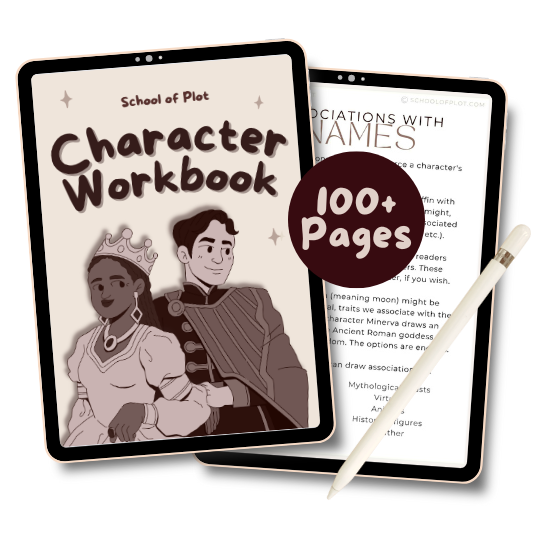Planners
What is the Difference Between Plotting and Planning?
Plotting and planning are both essential aspects of the writing process, but they have distinct roles:
-
Plotting: Plotting refers to the act of creating the overall storyline, including the major events, conflicts, and character arcs. It involves outlining the sequence of events that will drive the narrative from the beginning to the end. Plotting is about crafting the skeleton of your story, providing a clear roadmap for the writing process. If you want more information on plotting, check out this absolute vault of plotting knowledge.
-
Planning: Planning involves the organisation and logistics of the writing process. It includes tasks like setting writing goals, creating a writing schedule, organising research materials, and determining the best approach to tackle the story. Planning is more about the practical side of writing, while plotting deals with the creative and conceptual elements of the story.
How to Plan a Story Plot
The planners on this page take you through the entire book planning process, but to give you a rough overview.
-
Brainstorm Ideas: Start by generating ideas for your story. Think about the central conflict, the main characters, and the setting. Consider what themes or messages you want to convey.
-
Create Character Profiles: Develop detailed profiles for your main characters, including their goals, motivations, and backgrounds. These planners all have character sheets, or you can use a more thorough guided workbook (or both!)
-
Outline the Plot: Create an outline that covers the major plot points of your story, such as the inciting incident, rising action, climax, and resolution. Identify the key events that will drive the narrative forward.
-
Develop Subplots: Consider adding subplots to complement the main storyline and add depth to the narrative. Subplots can involve secondary characters or explore other themes related to the main plot.
-
Organize the Timeline: Arrange the events in a logical and chronological order to ensure a cohesive and well-paced plot.
-
Address Pacing: Pay attention to the pacing of your story. Balance action-packed scenes with quieter moments of character development and reflection.
-
Revise and Refine: Review your plot plan, making any necessary adjustments or improvements. Remember that planning is not set in stone, and you can make changes as needed.
What are the 7 Steps of Plot?
The 7 steps of plot, often referred to as the narrative arc or dramatic arc, are as follows:
-
Exposition: The introduction to the story, where the setting, characters, and initial situation are presented.
-
Inciting Incident: The event that sets the main conflict in motion, disrupting the protagonist's ordinary life.
-
Rising Action: The series of events that build tension and lead the story toward the climax.
-
Climax: The turning point of the story, where the conflict reaches its peak, and the protagonist faces a critical decision or confrontation.
-
Falling Action: The events that occur after the climax, showing the consequences of the protagonist's actions.
-
Resolution: The conclusion of the story, where loose ends are tied up, and the main conflict is resolved.
-
Denouement: The final wrap-up of the story, providing closure and insight into the characters' futures.
What is the Website For Plotting Stories?
The website I love for plotting stories is Notion in conjunction with my writing hub. It's so customisable and convenient to use, allowing you to plot and write on the go.
How do you Organise Plot Lines?
Organising plot lines involves keeping track of multiple storylines and ensuring they intertwine seamlessly. Some tips for organising plot lines are:
-
Create Separate Plot Summaries: Write individual summaries for each plotline, making it easier to visualise and track their progress.
-
Colour-Coding: Use different colours or symbols to represent each plotline in your notes or plot planner. This visual aid can help you quickly identify which plotline you are working on.
-
Timeline Chart: Create a timeline chart to visualise how each plotline progresses chronologically. This will help you spot any inconsistencies or gaps in the overall narrative.
-
Focus on Intersection Points: Identify key events or moments where the plotlines intersect or influence each other. These intersections are crucial for maintaining coherence and avoiding plot holes.
-
Maintain Consistent Pacing: Ensure that all plotlines receive adequate attention and are balanced in terms of pacing. Neglecting one plotline for too long may disengage readers from that particular story thread.
How do you Start Planning a Story?
To start planning a story, follow these steps:
-
Idea Generation: Begin with brainstorming ideas for your story. Consider the genre, theme, setting, and potential conflicts.
-
Character Development: Create detailed profiles for your main characters, including their background, motivations, and personal arcs.
-
Outline the Plot: Develop an outline of the major events that will happen in your story, from the beginning to the end.
-
Research and World-building: If your story requires research or extensive world-building, start gathering relevant information and creating the foundation for your story's setting.
-
Setting Writing Goals: Set specific writing goals and create a schedule to keep yourself on track during the writing process.
-
Create a Writing Space: Set up a comfortable and inspiring writing space that encourages creativity and focus.
How do I Start a Book?
Starting a book can be daunting, but here are some tips to help you begin:
-
Capture the Reader's Attention: Start with a compelling hook or an intriguing question that immediately captures the reader's interest.
-
Introduce the Protagonist: Introduce your main character early on, allowing readers to connect and empathise with them.
-
Establish the Setting: Describe the story's setting to immerse the reader in the world of your book.
-
Create a Mystery or Conflict: Present a mystery or conflict that drives the story forward and entices readers to continue reading.
-
Show, Don't Tell: Instead of providing excessive exposition, show the reader what is happening through actions, dialogues, and sensory details.
How do you Balance Multiple Storylines?
Balancing multiple storylines requires careful planning and attention to pacing. Here are some strategies to achieve balance:
-
Connect the Storylines: Ensure that each storyline is related to the central theme or conflict of the overall narrative, creating a cohesive and interconnected plot.
-
Alternating Perspectives: If you have multiple point-of-view characters, alternate between their perspectives to give each storyline equal attention.
-
Parallel Progression: Allow the storylines to progress simultaneously, maintaining a balance between them rather than focusing on one for an extended period.
-
Converging Events: Plan for key events where different storylines intersect or influence each other, adding depth and complexity to the narrative.
Can you Write a Story Without Planning?
Yes, it is possible to write a story without detailed planning, which is known as "pantsing" (writing by the seat of their pants). It often requires more editing and revision to achieve coherence and structure in the final draft but it can be fun and spontaneous.



